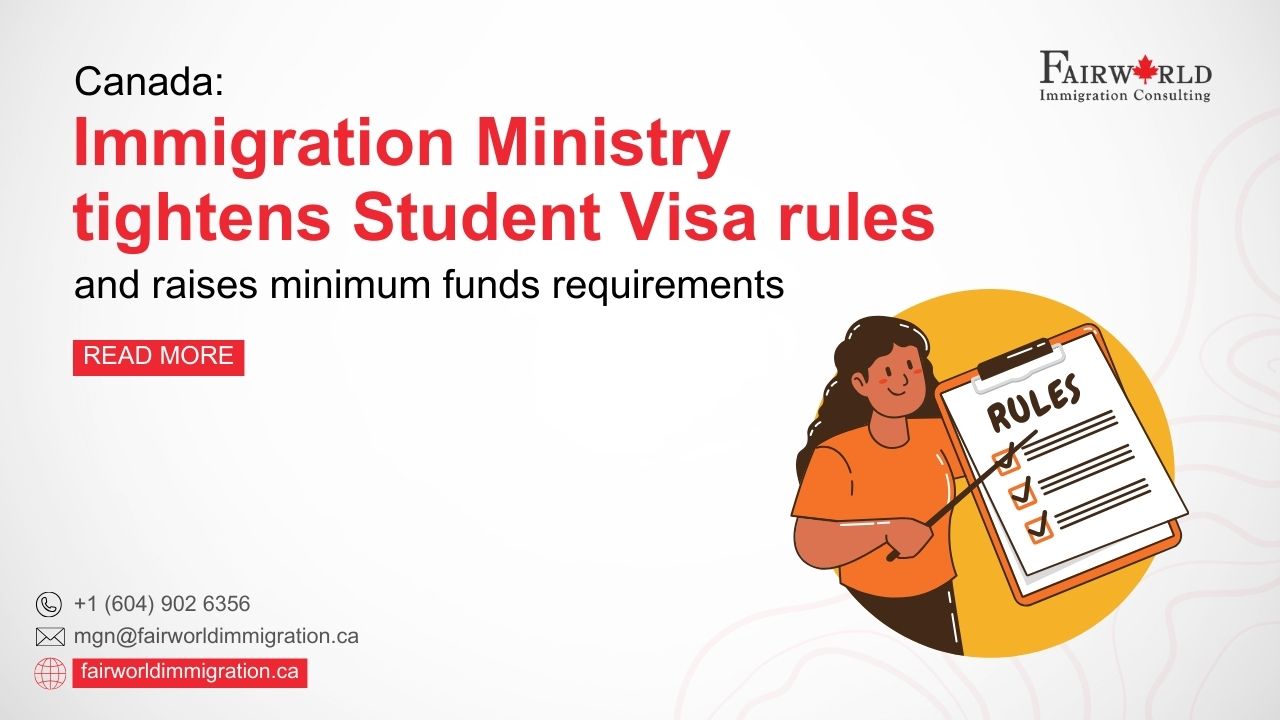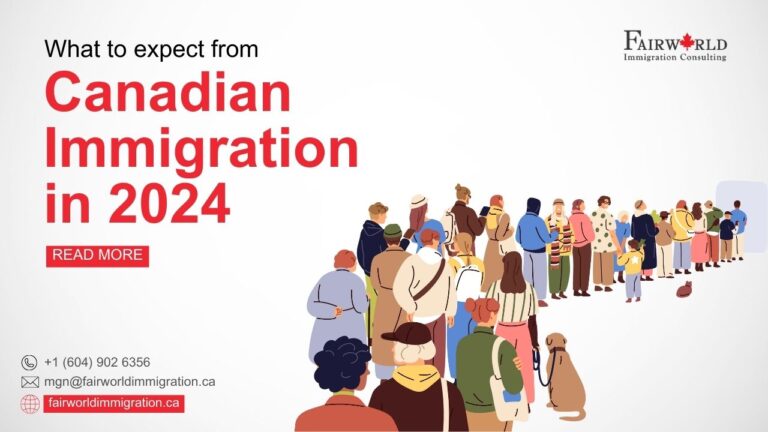Canada: Immigration Ministry tightens student visa rules and raises minimum funds requirements
Updated on May 03rd 2025 by Fairworld Immigration
Canada has long been a sought-after higher education destination for worldwide students due to its highly reputed schooling system, diverse cultures, and promising possibilities for immigrants. However, current tendencies inside Canada’s immigration guidelines have brought forth anxieties, especially in the realm of student visas. The Immigration Ministry’s choice to tighten rules and increase minimal fund necessities marks a pivotal shift in Canada’s approach in welcoming international college students.
Understanding the Need
Canada has long been a beacon for global college students, providing a blend of top-notch schooling and a culturally varied environment. However, current changes in Canada’s immigration regulations concerning student visas have introduced full-size adjustments. The decision by the Immigration Ministry to tighten policies and heighten the minimum fund necessities has sparked discussions about the purpose behind those changes.
Ensuring Genuine Intentions and Academic Commitment
The reason at the back of those policy shifts primarily revolves around fostering a more rigorous selection process for prospective students. Canada’s goals to draw students are certainly committed to their academic pursuits, ensuring that applicants possess genuine intentions aligned with their chosen fields of study.
Safeguarding Students’ Financial Well-being
The escalation of minimum fund requirements serves to prioritize the economic stability and well-being of international college students at the initial stage in their tenure in Canada. With multiplied funds mandated to cover dwelling expenses, training costs, and other related costs, the intention is to reduce the likelihood of students going through financial hardships. This step seeks to beautify the general experience of global students by providing them with the economic way vital to the cognizance of their studies without undue economic strain.
Aligning with Broader Immigration Goals
These adjustments in student visa policies intersect with Canada’s large immigration targets. By refining the student visa process, the authorities target to streamline the immigration pathway, potentially facilitating a smoother transition for eligible candidates from student status to permanent residency. This alignment ensures that folks who make a contribution substantially to Canada’s instructional landscape have clearer pathways to establish long-term residency.
In short, whilst these tightened policies and heightened financial conditions may also pose preliminary challenges for aspiring college students, they mirror Canada’s dedication to maintaining academic requirements, safeguarding college students’ welfare, and aligning with broader immigration techniques. These changes signify a planned effort to make sure that individuals who come to look at Canada are really devoted to their educational pastimes and contribute undoubtedly to the Canada’s diverse educational community.
Changes in Student Visa Regulations
The Canadian authorities, through its Immigration Ministry, have carried out stringent measures geared toward refining the student visa procedure. These modifications embody various components, from eligibility criteria to monetary stipulations, proceeding to enhance the exceptional education and maintain the integrity of the immigration process.
1. Stringent Eligibility Criteria
The revised policies now entail extra comprehensive scrutiny of candidates’ educational backgrounds and intentions. The Immigration Ministry emphasizes the significance of true educational pursuits, necessitating clearer objectives and plans from potential college students. Applicants are expected to demonstrate a concrete study plan aligned with their academic qualifications and career aspirations.
2. Enhanced Financial Requirements
One of the largest modifications revolves around the economic capability predicted by international college students. The minimum funds required to assist dwelling expenses whilst studying in Canada have been doubles from $10000 to $20635. This change aims to make certain that scholars have enough monetary sources to sustain themselves in the course of their tenure inside the country, reducing the weight on public sources.
3. Stricter Documentation and Verification
The documentation procedure now has higher requirements in meticulousness and accuracy regarding previous study and experience. This consists of only instructional transcripts, evidence of language proficiency, financial statements, and a comprehensive study plan. Verification techniques have been intensified to authenticate the credibility of data provided by the candidates.
Implications and Considerations
While these adjustments may pose demanding situations for prospective worldwide students, additionally they replicate Canada’s commitment to retaining the fine of its immigration system towards the welfare of immigrants. The raised minimal fund requirement goal is to make sure that students can manage to pay for the price of living in Canada, which is critical for their well-being and goals.
1. Impact on Prospective Students
The heightened monetary conditions might also present a hurdle for many aspiring college students who dream of pursuing education in Canada. Some might discover it hard to meet the increased fund requirement, thereby foregoing their hopes to enter Canadian universities and schools.
2. Strengthening Educational Standards
By enforcing greater stringent eligibility criteria, Canada objectives to draw students truly dedicated to their educational pursuits. This pass is aligned with the objective of retaining excessive educational requirements and fostering a network of significant and committed scholars.
3. Long-Term Immigration Goals
These modifications now not only effectively affect student visas but also intersect with Canada’s broader immigration strategy. The authorities aim to streamline the immigration system, potentially paving the way for a more efficient transition from student status to permanent residency for eligible candidates.
Conclusion
Canada’s tightening of student visa policies and the raising of minimal fund requirements represent a strategic shift in its technique to welcoming international college students. While these adjustments would possibly pose preliminary challenges for prospective college students, they’re supposed to uphold the best of education, guard the welfare of immigrants, and align with broader immigration objectives. As the landscape of international training evolves, those measures characterize Canada’s dedication to keeping its function as an international schooling hub while ensuring the sustainability and integrity of its immigration machine.






